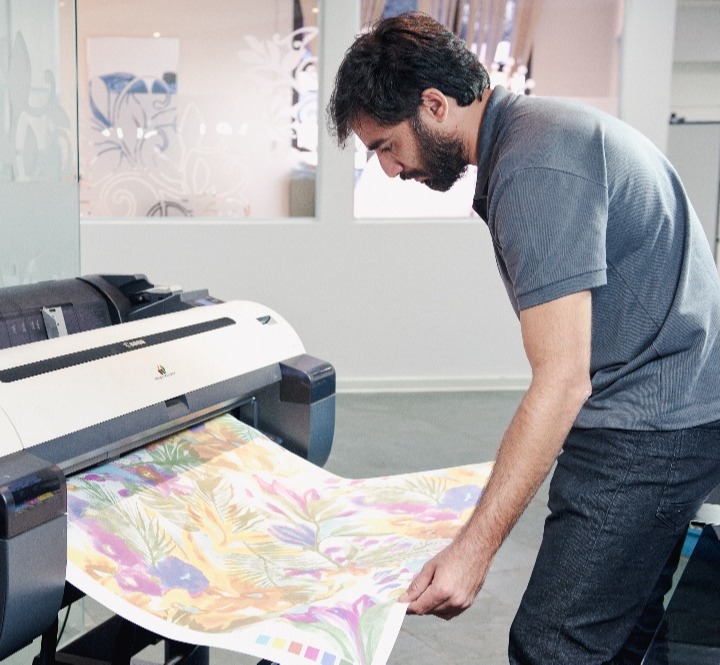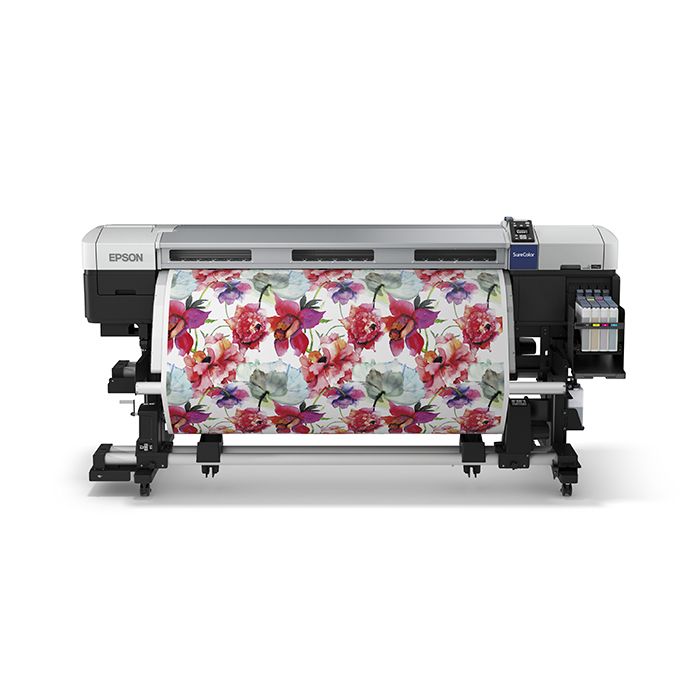Letting Loose Creativity with Heat Transfer Vinyl Printing for Customized Styles
Letting Loose Creativity with Heat Transfer Vinyl Printing for Customized Styles
Blog Article
From Conventional to Digital: Comprehending the Development of Towel Printing
The change of fabric printing from traditional techniques like block printing and withstand dyeing to contemporary techniques such as screen and electronic printing notes a considerable change in the fabric sector. Typical methods, soaked in artisanal workmanship and social value, have actually progressively paved the way to digital technologies that supply unmatched accuracy, performance, and customization. This transition not only enhances manufacturing capabilities but also lines up with growing needs for lasting practices. Yet, how do these developments affect the essence of fabric printing, and what might the future hold for this ever-evolving craft?
Typical Fabric Printing Methods
In the early stages of textile manufacturing, typical towel printing methods offered as the cornerstone of material layout, offering both capability and artistic expression. Methods such as block printing, withstand dyeing, and stenciling were thoroughly developed and fine-tuned over centuries, each adding special aesthetic top qualities and sensible applications to the fabric market. Block printing, one of the oldest techniques, included sculpting intricate layouts into wooden blocks, which were then dipped in color and pushed onto material. This labor-intensive process permitted the repeating of comprehensive patterns, showcasing the craftsmen's skill and creativity.
Stand up to dyeing, including methods like batik and tie-dye, utilized wax or various other compounds to stop color from permeating specific areas of the fabric. This technique developed striking contrasts and complex designs, frequently imbued with social importance. Stenciling, another conventional method, entailed cutting patterns into a material and using dye through the openings, providing an easier yet efficient way to create recurring styles.
These typical techniques not only formed the fabric market's very early advancement but also prepared for future technologies. Each technique mirrored the local and cultural features of its beginning, preserving and distributing artisanal understanding through generations.
The Rise of Display Printing
Just how did display printing transform the landscape of fabric style? The arrival of screen printing in the very early 20th century marked a substantial departure from typical approaches, supplying unmatched versatility and effectiveness. This technique includes pushing ink with a fine mesh screen that has been stenciled with a style, permitting high precision and uniformity. Screen printing allowed developers to create intricate patterns and dynamic shades on materials, which were previously challenging to accomplish with block printing or hand-painting approaches.
Among the key benefits of screen printing is its capacity to replicate intricate layouts widespread with remarkable fidelity. This scalability made it profoundly popular in the industrial textile industry, where mass production without compromising high quality is paramount. Additionally, display printing accommodates a wide variety of dyes and inks, expanding the scheme of appearances and finishes offered to developers.
Furthermore, the procedure is extremely adaptable, ideal for numerous textile types including cotton, silk, and synthetics. This adaptability, integrated with its cost-efficiency for large runs, solidified display printing's function as a cornerstone of contemporary fabric production. Thus, the rise of screen printing changed the sector, pushing the limits of what was possible in fabric layout.

The Development of Digital Printing
Building on the exceptional innovations brought by display printing, the textile market experienced one more groundbreaking growth with the advent of electronic printing. Arising in the late 20th century, digital printing revolutionized the method designs are transferred onto materials, using extraordinary flexibility and effectiveness. Unlike typical methods, which frequently needed considerable setup and substantial hand-operated intervention, digital printing employs computer-aided style (CAD) innovation to generate intricate patterns straight onto the textile with high accuracy.
This innovation has actually allowed try this out fabric suppliers to meet the growing need for modification and on-demand production. By eliminating the need for displays and plates, digital printing lowers preparations and reduces product waste, making it a much more lasting choice. The ability to publish intricate images and a broad range of colors in a solitary pass has opened brand-new creative opportunities for developers, cultivating a surge in creative expression within the market.
In addition, digital printing supports smaller sized set manufacturing runs, which is especially advantageous for particular niche markets and startup style brands. This technical jump has not just boosted functional performance however also equalized access to top notch fabric printing, establishing the stage for future developments in material design and production.
Contrasting Techniques: Conventional Vs. Digital
While both standard and digital printing techniques have their very own unique advantages, they differ significantly in terms of procedure, effectiveness, and environmental influence. Traditional towel printing, including methods like block printing and display printing, involves hands-on labor and intricate workmanship.
In contrast, electronic printing utilizes advanced modern technology to move layouts directly onto fabric using inkjet printers. Digital printing is dramatically faster, permitting for fast turn-arounds and just-in-time manufacturing, which lowers the demand for large stock storage space.
From an environmental perspective, digital printing is generally much more sustainable. It uses much less water and generates marginal waste contrasted to standard approaches, which usually involve extensive washing and dyeing procedures. Consequently, digital printing is significantly preferred in a period where ecological factors to consider are vital.
Future Trends in Towel Printing
One significant trend is the increased application of digital printing technologies. Digital fabric printing is anticipated to control the market, driven by its performance and flexibility to customer demands for customized and limited-edition products. heat transfer vinyl printing.

Additionally, the unification of smart fabrics, which integrate digital elements right into fabrics, is established to transform the marketplace. These textiles can supply added performances such as temperature level policy, health tracking, and interactive functions. As modern technology proceeds to development, the junction of digital printing and smart fabrics will open up new opportunities for practical and imaginative applications in cloth printing.
Final Thought
The advancement of cloth printing from conventional approaches to electronic developments notes a substantial improvement in the textile industry. While typical methods highlight artisanal workmanship and cultural heritage, electronic printing uses unparalleled accuracy, efficiency, and modification. This shift not just improves manufacturing abilities yet likewise supports sustainability initiatives. Future patterns are likely to proceed integrating see it here innovative technologies, even more redefining textile layout and production procedures to fulfill contemporary demands and ecological considerations (DTF printing).
The improvement of towel printing from typical methods like block printing and withstand dyeing to contemporary methods such as screen and digital printing notes a substantial change in the fabric sector. Screen printing made it possible for designers to generate complex patterns and resource dynamic shades on fabrics, which were formerly challenging to accomplish with block printing or hand-painting techniques.
Structure on the exceptional innovations brought by display printing, the fabric market experienced one more groundbreaking growth with the development of electronic printing. screen printing. Traditional fabric printing, encompassing methods like block printing and screen printing, involves hand-operated labor and detailed workmanship. As innovation proceeds to advance, the crossway of electronic printing and clever textiles will open up brand-new avenues for innovative and useful applications in fabric printing
Report this page